
Otto Heinrich Frank was the father of Anne Frank. He edited and published the first edition of her diary in 1947 and advised on its later theatrical and cinematic adaptations. In the 1950s and 60s he established European charities in his daughter's name and founded the trust which preserved his family's wartime hiding place, The Anne Frank House, in Amsterdam.
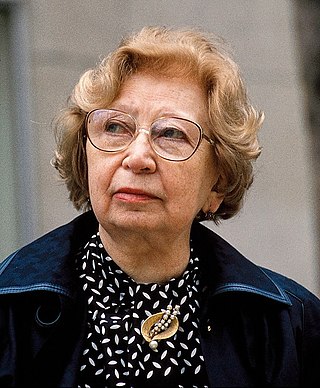
Hermine "Miep" Gies was one of the Dutch citizens who hid Anne Frank, her family and four other Dutch Jews from the Nazis in an annex above Otto Frank's business premises during World War II. She was Austrian by birth, but in 1920, at the age of eleven, she was taken in as a foster child by a Dutch family in Leiden to whom she became very attached. Although she was only supposed to stay for six months, this stay was extended to one year because of frail health, after which Gies chose to remain with them, living the rest of her life in the Netherlands.
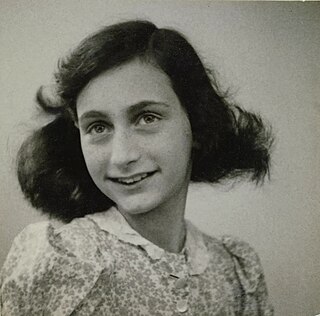
Annelies MarieFrank was a German-born Jewish girl who kept a diary in which she documented life in hiding under Nazi persecution during the German occupation of the Netherlands. She is a celebrated diarist who described everyday life from her family hiding place in an Amsterdam attic. One of the most-discussed Jewish victims of the Holocaust, she gained fame posthumously with the 1947 publication of The Diary of a Young Girl, in which she documents her life in hiding from 1942 to 1944 — it is one of the world's best-known books and has been the basis for several plays and films.
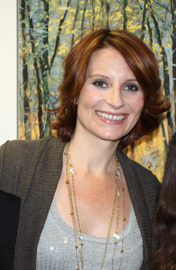
Meggin Patricia Cabot is an American novelist. She has written and published over 50 novels of young adult and adult fiction and is best known for her young adult series The Princess Diaries, which was later adapted by Walt Disney Pictures into two feature films. Cabot has been the recipient of numerous book awards, including the New York Public Library Books for the Teen Age, the American Library Association Quick Pick for Reluctant Readers, the Tennessee Volunteer State TASL Book Award, the Book Sense Pick, the Evergreen Young Adult Book Award, the IRA/CBC Young Adult Choice, and many others. She has also had number-one New York Times bestsellers, and more than 25 million copies of her books are in print across the world.

The Diary of a Young Girl, often referred to as The Diary of Anne Frank, is a book of the writings from the Dutch-language diary kept by Anne Frank while she was in hiding for two years with her family during the Nazi occupation of the Netherlands. The family was apprehended in 1944, and Anne Frank died of typhus in the Bergen-Belsen concentration camp in 1945. Anne's diaries were retrieved by Miep Gies and Bep Voskuijl. Miep gave them to Anne's father, Otto Frank, the family's only survivor, just after the Second World War was over.

Karl Josef Silberbauer was an Austrian police officer, Schutzstaffel (SS) member, and undercover investigator for the West German Bundesnachrichtendienst. He was stationed in Nazi-occupied Amsterdam during World War II, where he was promoted to the rank of Hauptscharführer. In 1963, Silberbauer, by then an inspector in the Vienna police, was exposed as the commander of the 1944 Gestapo raid on the Anne Frank House Secret Annex and the arrests of Anne Frank, her fellow fugitives, and two of their protectors, Victor Kugler and Johannes Kleiman.
Millie Perkins is an American retired film, television actress and model known for her debut film role as Anne Frank in The Diary of Anne Frank (1959), and for her supporting actress roles in two 1966 Westerns, The Shooting and Ride in the Whirlwind, both directed by Monte Hellman.

Margot Betti Frank was the elder daughter of Otto Frank and Edith Frank and the elder sister of Anne Frank. Margot's deportation order from the Gestapo hastened the Frank family into hiding. According to the diary of her younger sister, Anne, Margot kept a diary of her own, but no trace of it has ever been found. She died in Bergen-Belsen concentration camp.

Friedrich "Fritz" Pfeffer was a German dentist and Jewish refugee who hid with Anne Frank and her family and the Van Pels family during the Nazi occupation of the Netherlands. He perished in the Neuengamme concentration camp in Northern Germany. Pfeffer was given the pseudonym Albert Dussel in Frank's diary, and remains known as such in many editions and adaptations of the publication.

Victor Kugler was one of the people who helped hide Anne Frank and her family and friends during the Nazi occupation of the Netherlands. In Anne Frank's posthumously published diary, Het Achterhuis, known in English as The Diary of a Young Girl, he was referred to under the pseudonym Mr. Kraler.

Johannes Kleiman was one of the Dutch residents who helped hide Anne Frank and her family during the Nazi occupation of the Netherlands. In the published version of Frank's diary, Het Achterhuis, known in English as The Diary of a Young Girl, he is given the pseudonym Mr. Koophuis. In some later publications of the diary, the pseudonym was removed, and Kleiman was referred to by his real name.
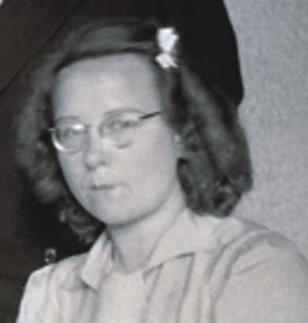
Elisabeth "Bep" Voskuijl was a resident of Amsterdam who helped conceal Anne Frank and her family from Nazi persecution during the occupation of the Netherlands. In the early versions of Het Achterhuis, known in English as The Diary of a Young Girl, she was given the pseudonym "Elli Vossen".

Edith Frank was the mother of Holocaust diarist Anne Frank, and her older sister Margot. After the family were discovered in hiding in Amsterdam during the German occupation, she was transported to Auschwitz-Birkenau concentration camp.
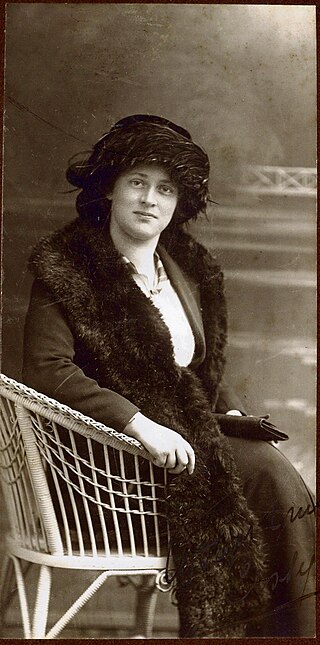
Sietske de Haan, better known by her pen name Cissy van Marxveldt, was a Dutch writer of children's books. She is best known for her series of Joop ter Heul novels.

The Anne Frank House is a writer's house and biographical museum dedicated to Jewish wartime diarist Anne Frank. The building is located on a canal called the Prinsengracht, close to the Westerkerk, in central Amsterdam in the Netherlands.
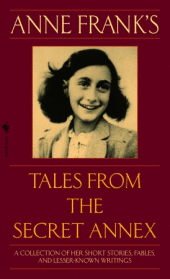
Tales from the Secret Annex is a collection of miscellaneous prose fiction and non-fiction written by Anne Frank while she was in hiding during the Nazi occupation of The Netherlands. It was first published in The Netherlands in 1949, then in an expanded edition in 1960. A complete edition appeared in 1982, and was later included in the 2003 publication of The Revised Critical Edition of The Diary of Anne Frank. These stories show what life in the Annex was like. For example, one story describes Mrs. Van D’s ‘dentist appointment’. Others show life before the Annex, such as telling on the class for cheating. Anne also describes loneliness in the Annex, like missing her friends.
Jacqueline Yvonne Meta van Maarsen is a Dutch author and former bookbinder. She is best known for her friendship with diarist Anne Frank. Jacque's Christian mother was able to remove the J (Jew) signs from the family's identity cards during the Second World War, thereby helping the van Maarsens escape the Nazis.

Das Tagebuch der Anne Frank is a 2016 German drama film directed by German filmmaker Hans Steinbichler and written by Fred Breinersdorfer. It stars Lea van Acken as the titular character, Martina Gedeck, Ulrich Noethen, and Stella Kunkat. The film is based on Anne Frank's famous diary and tells the story of Anne Frank, the Jewish girl who went into hiding with her family in Amsterdam and became a victim of the Holocaust.

Adriana Geertruida Labij is a Dutch actress. Although she is best known to the general public for TV series such as Joop ter Heul and Pleisterkade 17. She was noted for her comedic ability in the musicals such as Madam and Foxtrot, but since her stage debut in 1965 she has mainly played roles in classical and modern plays with the Haagse Comedie, Toneelgroep De Appel and the Ro Theater. Labij also played with the cabaret group Purple.
















